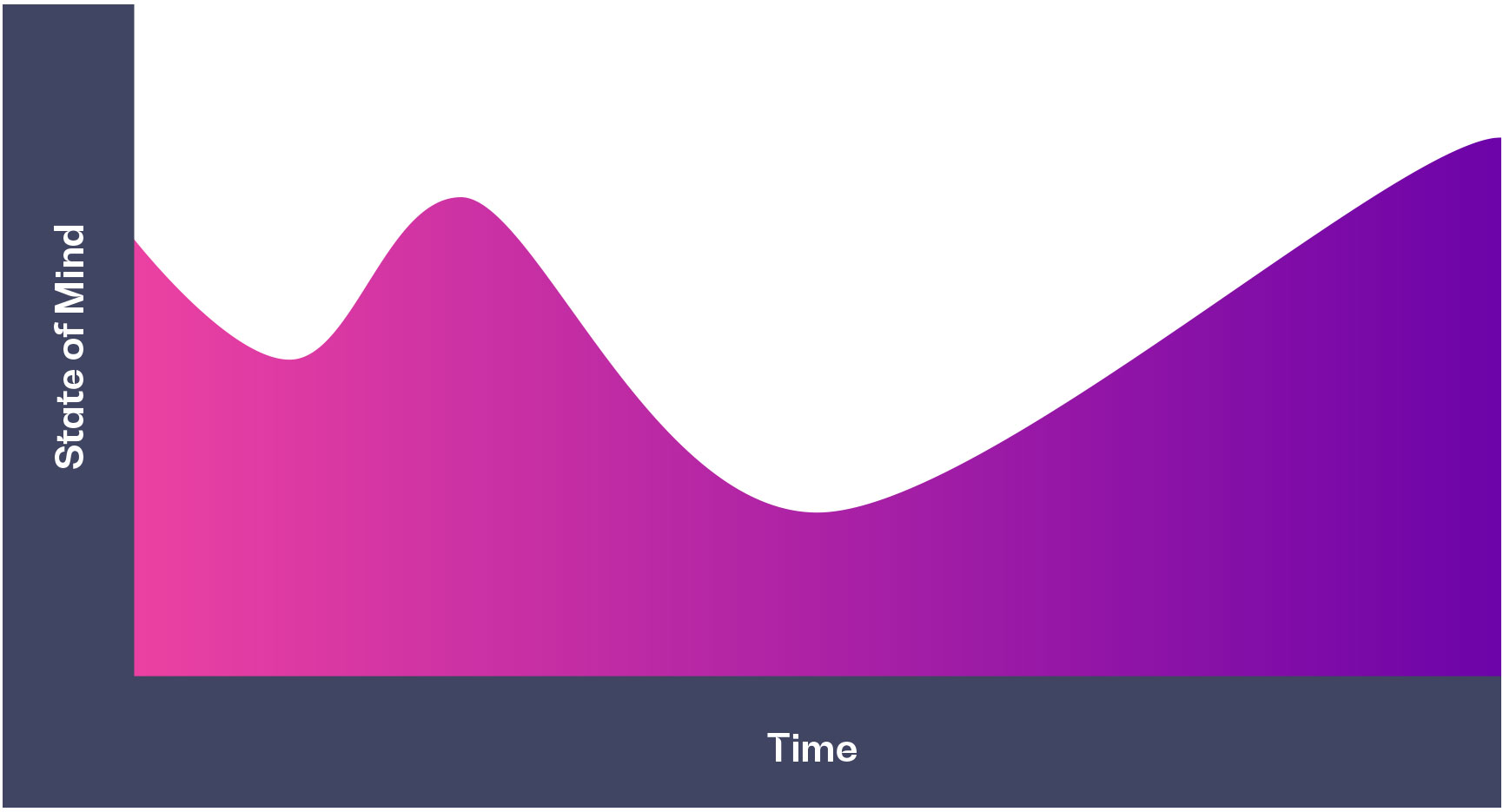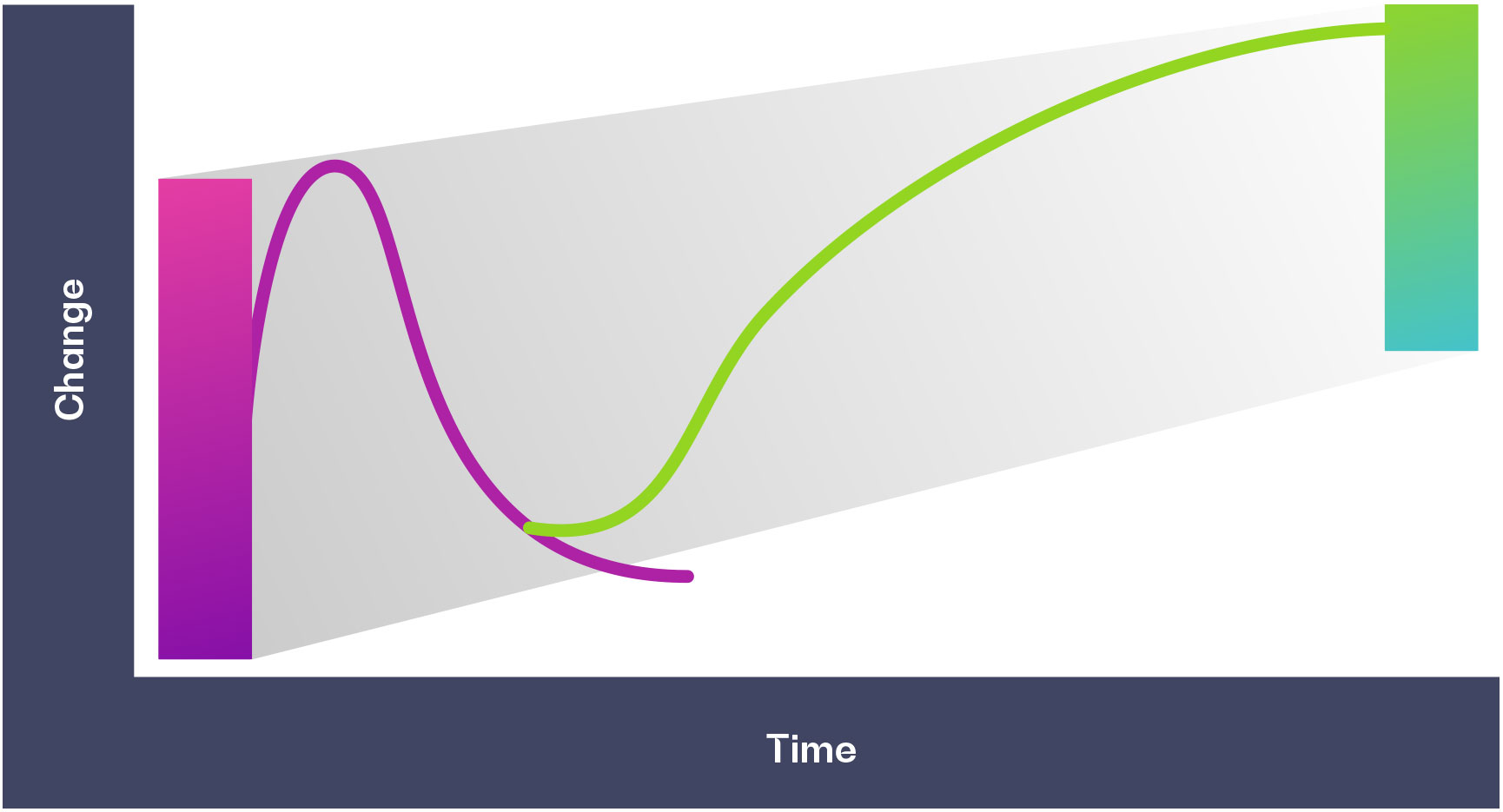The Change Cycle Explained
Below is a graph derived from the work of Elizabeth Kubler Ross who studied people’s reactions to bereavement and loss. She found that in many cases people go through a similar cycle of emotions, although people take different amounts of time to go through each stage.

Shock
Denial
Frustration
Depression
Experiments
Decisions
Integration/
Acceptance
Shock – Shock and surprised in response to an event: “I can’t believe it”. This is when the reality of the change first hits home.
Denial – Denial of the change and therefore you find ways to prove it isn’t happening, stick your head in the sand, and reassure yourself it is not happening.
Frustration – On the way down: anger, blame culture, showing frustration, still not accepting – “Why pick on me?”.
Depression – Hitting rock bottom, experiencing depression and apathy. Everything seems pointless: “Why bother?” and “I’m ready to give up”.
Experiment – The previous stage is so bad that we begin to pull ourselves out. This is where begin to accept new ideas: “I think I will have a go”, “how will my job look after the change?”.
Decisions – Deciding what works and what doesn’t. Beginning to not only accept the change but to embrace it and feeling more optimistic. “This isn’t so bad after all, it actually seems to be working”.
Integration/Acceptance – You will be integrating the new change into your life, it is part of the norm: “The new me”.
Whether change is positive, unwelcome or unknown, research has shown that individuals respond to change in a similar way. This reaction is illustrated in the change curve diagram, which shows the range of feelings and emotions people typically go through during the course of a change.
The Change Cycle at Work
Since the publication of her work, research was carried out into how people react to change at work and it was found that individuals go through a very similar cycle of emotions and reactions in response to organisational change:

P1
P2
P3
P4
A1
A2
Explanation of the organisational model
P1 – This represents where the organisation is today with varying levels of acceptance to change.
P2 – This represents where the organisation would like to get to, this is usually to make improvements and ensure that change is accepted throughout the organisation.
P3 – This line represents the emotion of pain; this is a typical emotion that is experienced during any organisational change.
P4 – This line represents the emotion of pleasure, as seen in the exercise on pages 2 and 3, this is another emotion experienced during organisational change.
A1 – This is a change cycle where change is not accepted: the first stages are the same for when change is accepted at the outset of change emotions will typically be neutral with maybe a mixed reaction the change is publicised, but little is happening on the ground. There is generally acceptance, with positive and pleasurable emotions as the change becomes imminent and starts to take place there are usually negative emotions. A rejection of the change starts to occur and the change cycle will slow without any positive reinforcement and drive forward of the changes, the organisation will eventually terminate the change. People are then left with negative feelings and the organisation is left in an undesirable state.
A2 – Where change is accepted: you will find that exactly the same emotions are experienced as in the cycle described above; however, the key difference is in the level of commitment and support that is given to the change. An effective change manager will recognise the different emotions and manage their staff through support and encouragement another key factor is that the pace of change needs to be maintained, so that individuals have little time to dwell on the negatives once the change has been completed and commitment is maintained, then the usual outcome is positive. The organisation then reaches a new level and starts to enjoy the key benefits of the change.


